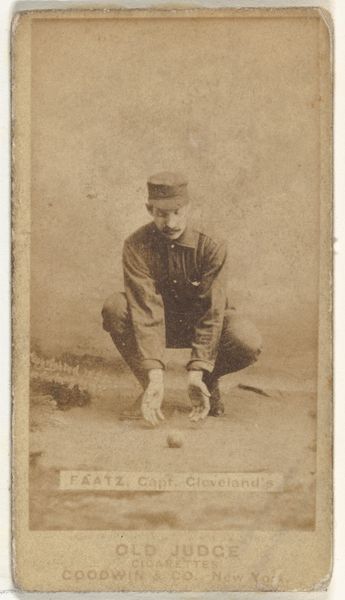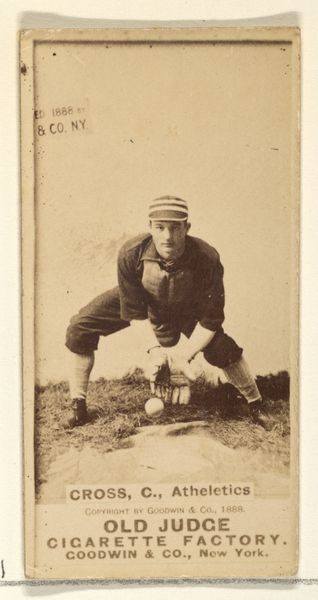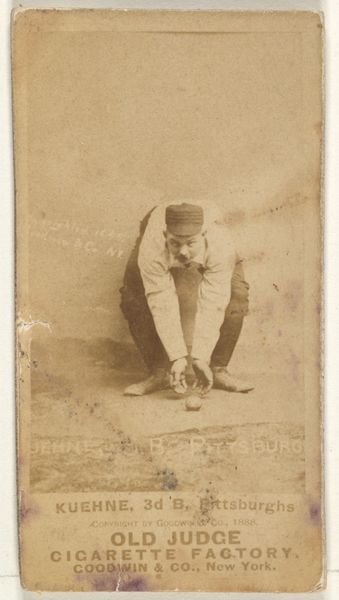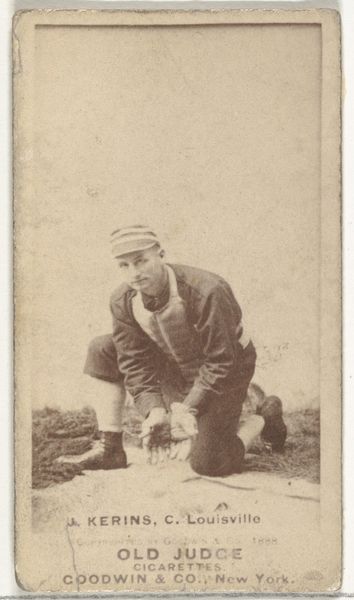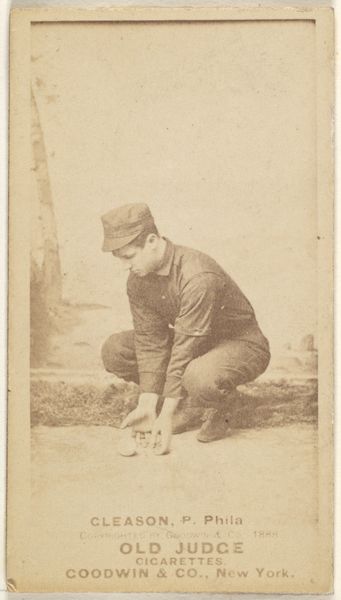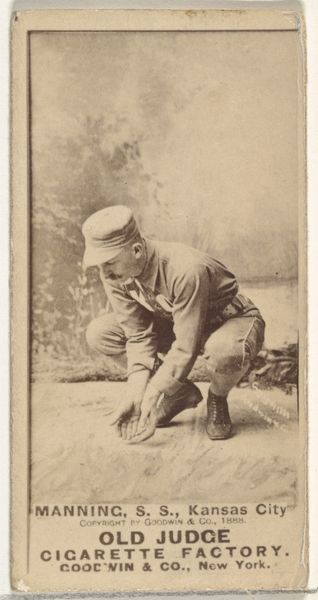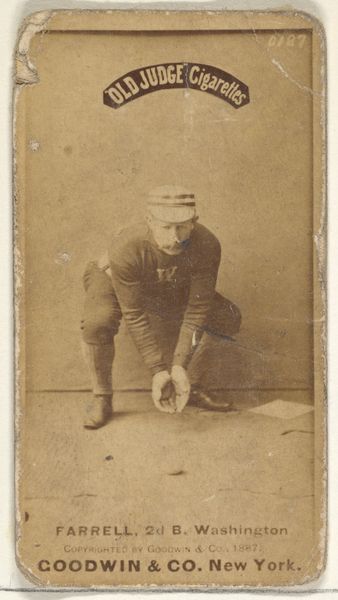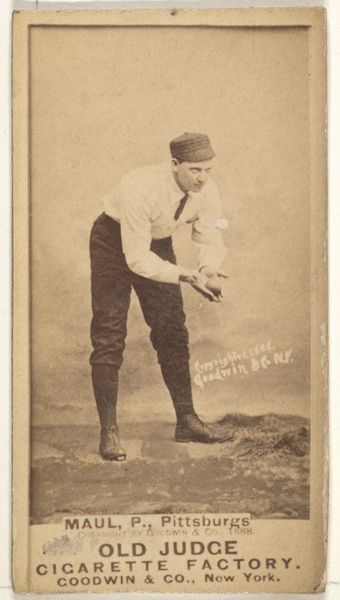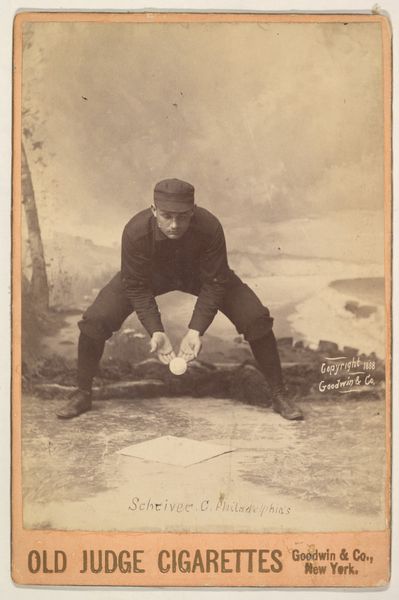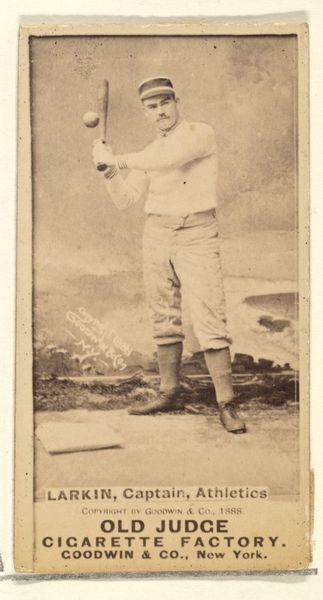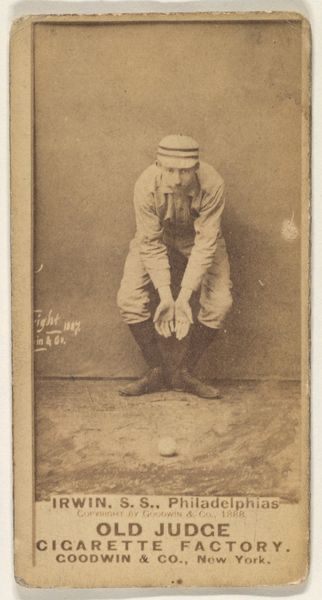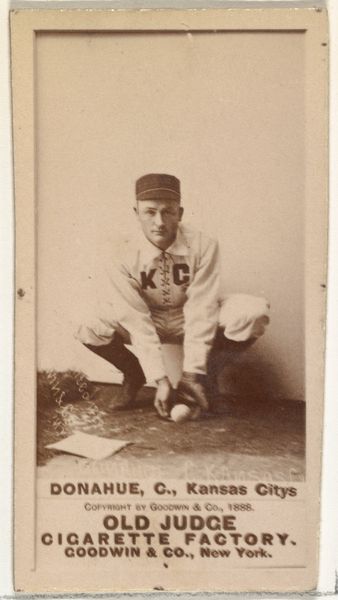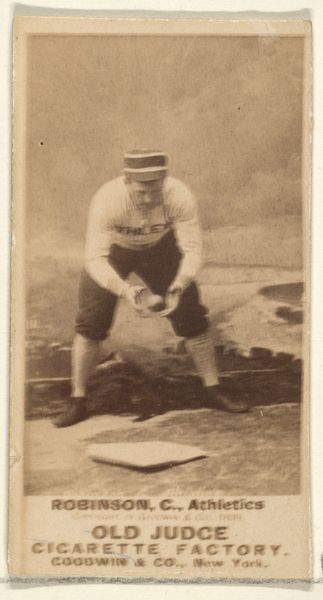
Jayson S. "Jay" Faatz, Captain, Cleveland, from the Old Judge series (N172) for Old Judge Cigarettes 1888
0:00
0:00
drawing, print, photography, albumen-print
#
portrait
#
drawing
# print
#
baseball
#
photography
#
men
#
albumen-print
Dimensions: sheet: 2 11/16 x 1 3/8 in. (6.9 x 3.5 cm)
Copyright: Public Domain
Curator: This rather sepia-toned card features Jayson S. "Jay" Faatz, a baseball captain from Cleveland, in 1888. It’s an albumen print, part of the "Old Judge" series for Old Judge Cigarettes, produced by Goodwin & Company. Editor: There's a stillness to the scene that really captivates me. Faatz is in a crouch, with his hand just inches from the ground near a ball. The tonal range from top to bottom of the picture gives the picture plane a grounding sensation; a calmness before action, frozen in time. Curator: The albumen process gives the print a distinct surface quality; smooth, yet revealing texture upon closer inspection, doesn’t it? What's interesting is the cultural context – using baseball cards as cigarette inserts. It speaks volumes about how sports and commerce were intertwined even then. These cards were like miniature advertisements meant to cultivate brand loyalty amidst growing baseball fever. Editor: Yes, this fusion definitely invites questions on the interplay between the individual subject, Jayson Faatz, and the broader structures in late 19th-century American culture. Look at the strategic framing that positions Faatz alongside the Old Judge brand name. The photographer wanted you to relate this player to their brand, and vice versa! It also seems a common, yet very early, use of marketing by photography, with the aesthetic values firmly in the commercial interest. Curator: The framing also isolates him. Note how little is in the background; nothing distracts the eye from Faatz or that little ball in front of him. By flattening pictorial space with minimal tonal variation, Goodwin & Co, forces you to confront their subject as an iconographic emblem of the ideal baseball player! This reinforces the brand message in a visually compelling manner. Editor: Seeing it from a purely representational perspective, what stands out is how this image blurs the boundary between documentation and myth-making, don’t you think? Curator: Indeed. The way Goodwin & Company harnessed visual culture to both document a budding sport and solidify their own brand leaves a legacy that extends far beyond the baseball diamond. Editor: In thinking about the work through the lens of baseball fever and branding, I find it very easy to get immersed into. Curator: I wholeheartedly agree; considering its construction enriches the aesthetic understanding even further!
Comments
No comments
Be the first to comment and join the conversation on the ultimate creative platform.
